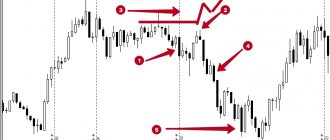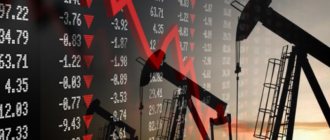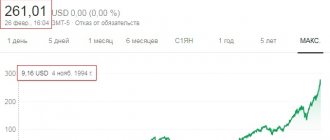US history and how it affected GDP
In the 16th to 18th centuries, the American economy took a leap from its prosperous colonial past toward an industrialized global economy. The main sources of income were: shipbuilding and navigation, growing tobacco and rice, hunting and selling furs.
Scientific and technological revolution in Europe in the 18th and 19th centuries, which spread overseas, along with competent financial policies, led to significant economic growth. The victory of the northern states in the Civil War accelerated the economic development of the state, laying the foundation for the modern American economy.
The discovery of oil fields in Pennsylvania, the creation of the typewriter, the development of electricity, the invention of the phonograph, telephone and telegraph gave impetus to the further development of the United States. The beginning of the 20th century was the era of airplanes and cars.
The First and Second World Wars stimulated further industrial growth. The second half of the 20th and early 21st centuries were characterized by undulating dynamics of economic development, in which periods of depression were followed by periods of progress. In 2021, average per capita income reached a record high in U.S. history, reaching $3,654.
Whose prediction is correct?
If we take the available indicators for the first quarter of 2021, the US GDP growth is 0.8%, which surprised experts a lot, because during this period growth was expected to be 2 times lower. To understand that this is a very high growth rate, it is enough to multiply it by 4 (the number of quarters in a year), and it turns out that the country’s GDP will grow by 3.2% per year.
Strengthening the impression from the growth figures in the first quarter is that business activity is traditionally not very high in the first 3 months. Therefore, the preliminary forecast of the Ministry of Trade for this period was no more than 0.5% growth.
At the beginning of the year, the United States traditionally experiences an economic lull, which follows the Thanksgiving and Christmas sales in November and December. After this, economic development and trade come to a standstill during the remaining 2 months of winter. But they account for two-thirds of the first quarter. The situation is aggravated by severe frosts in the first 2 months after the New Year.
The 0.3% difference is explained by the fact that private investment in inventories did not fall as much as previously thought. But there were also analysts who expected growth of 0.9% in this period. This concerns the consensus forecast of experts, which were collected by Reuters.
But experts from the Danish Saxo Bank accurately pointed to the country’s economic growth rate during this period. It should be taken into account that for the same period in 2021, economic growth in the United States was 0.6%.
General characteristics of the US economy
The US economic model is innovative. The state provides assistance to small and medium-sized businesses in conducting R&D, and also invests them itself (in approximately 50% of cases). According to statistics, 50% of innovations in developed countries come from the United States. Research focused on building applied capabilities with lasting impact is the foundation of US economic development. For every 1 million inhabitants there are 4,100 scientists and engineers. This figure is 280 per 10,000 working citizens.
Is Russia catching up or lagging behind America?
When Russian citizens hear about the economies of developed countries, they are interested in the question of how the country's economic development relates to the economies of these states. Half a century ago, a country like the USSR managed, if not to compete with the United States on equal terms, then to demonstrate not a very big difference.
The real GDP of the USSR, or the economic potential of the country of the Soviets, in 1970 was $433.4 billion, and the American figure was $1075.9 billion. But after 20 years, the dynamics of GDP led to the fact that the difference increased. The USSR's GDP fell to $778.4 billion after growing to $940 billion in 1980. But the size of the economic potential of the States increased by more than 5.5 times, reaching almost $6 trillion.
They believe that it is incorrect to compare the real GDP of the USSR and the USA, because the countries have different economic models. The Union had a planned economy, while the States had a market economy. It is worth noting that in 1970 the GDP of the USSR exceeded the GDP of such countries as Japan, Germany, France, and Italy. Already in 1980, Japan was ahead of the USSR by $147 billion, and Germany was equal, while Italy and France were still economically behind the Union.
In 1990, due to the failed policies of the country's leadership, the USSR experienced a drop in GDP, and it lagged behind all 5 countries, with Japan by 4 times, and Germany by 2.3 times.
In 2020-2021, if Russia’s economic potential is recalculated by PPP, then the situation looks good: Russia ranks 6th, despite the fact that Russia is only part of the USSR. If we take the nominal GDP of $1,325 billion, then Russia is in 12th place. The USA ranks either first or second in these indicators.
Structure by industry
The American economy is post-industrial in structure. Focused on the results of STP (scientific and technological progress).
79.4% of GDP, according to data for 2004, comes from the service sector (science and education, finance and health care), 20.6% of the year - from material production, of which industrial and agricultural products are correlated as 19.7 % to 0.9%.
In 2012, the structure of GDP changed little. The share of industrial production increased to 22.1%, the service sector decreased to 76.8%, and agriculture amounted to 1.1%. In monetary terms, the GDP amounted to $14.615 trillion.
Agriculture
The USA is characterized by developed technological agriculture, being the world leader in soybean harvesting. They occupy third place in the cultivation of sugar beets. The annual grain harvest is more than 440 million tons (of which 60 million tons are exported), which is 16% of the world volume.
Industry
The basis of the industry consists of the following areas of industry:
- automotive;
- aircraft manufacturing;
- rocket and space;
- nuclear;
- military-industrial (VPK - military-industrial complex);
- mining
Automotive
The automotive capital of the United States is Detroit (Michigan), where the headquarters of the main automotive giants are located: General Motors, Ford, Chrysler.
Aircraft manufacturing
The aircraft industry is based on innovative technologies, occupying a leading position in the world in terms of scale and production volumes. Government and defense orders have a significant impact on the development of the industry. The American economy is militarized.
Rocket and space
Monopolies dominate. There are no more than 3-4 corporations in the country working in this area. It is one of the three world leaders (along with Russia and the EU). The main industrial centers are located in Southern California.
Nuclear
It is the largest in the world. Includes 97 operating nuclear reactors with a total capacity of 98.4 GW. Nuclear power plants generate 19.32% of the country's electricity consumption.
Military-industrial
The US military-industrial complex is an alliance of the CEO of the military industry and the management level of the government apparatus. Formed after World War II, mainly in the 50s. Includes:
- state and private monopolistic military-industrial concerns;
- banks;
- entrepreneurs' unions;
- scientific centers, including research institutes;
- government departments and institutions (Department of Defense, better known as the Pentagon; generals; CIA);
- some congressional committees;
- senators of the Democratic and Republican parties supporting the interests of the military-industrial complex.
The US military budget in 2021 exceeded $716 billion.
Mining
Oil is the main source of energy for the state. In 2013, the country had 1,373 crude oil drilling rigs and 383 natural gas drilling rigs. However, there is currently an oil shortage in America. About 20 million barrels are consumed per day, 4.9 million are produced, and about 11.1 million are imported. The volume of the strategic oil reserve is about 727 million barrels. When the “hour X” arrives, it should be enough for three months.
Major oil production areas include Texas, the North Slope of Alaska, the San Joaquin River Basin in California, and the Gulf of Mexico continental shelf. In February 2021, the United States surpassed Saudi Arabia in terms of oil production.
Services sector
The key role belongs to transport and the financial system.
Transport
The country has the longest roads and railways in the world (6,506,204 km and 226,427 km). The United States holds the world lead in the number of airports and airfields.
Financial system
The financial sector is characterized by pronounced development. The total volume of traded financial instruments in 2010 on the New York Stock Exchange amounted to $17.796 trillion. Since the late 60s of the 20th century, the state budget has been characterized by a constant deficit. As of January 31, 2012, the total US national debt amounted to $15,356 billion, 68% of which was internal debt to individuals and legal entities ($10,572 billion) and 32% external debt to foreign countries ($4,783 billion).
The USA is the world leader in attracting foreign investment. In the first 10 years of the 21st century, their volume amounted to $1.7 trillion. R&D is given particular priority. In 2011, investment amounted to 34% of global spending ($405.3 billion or 2.7% of GDP).
List of main macroeconomic indicators
Definition 1
Macroeconomic indicator is the total value of the macroeconomy, obtained by aggregating indicators characterizing the volumes of production, consumption, welfare, and foreign economic activity.
The national economic system is regulated by the market mechanism and government instruments for influencing economic processes. Making effective management decisions in the field of economic policy must be based on specific data. For this purpose, a list of macroeconomic indicators is being developed that characterize the general state of the economy and its individual aspects.
The main macroeconomic indicators are:
Finished works on a similar topic
- Coursework Basic macroeconomic indicators of the USA 430 rub.
- Abstract Main macroeconomic indicators of the USA 260 rub.
- Test work Basic macroeconomic indicators of the USA 200 rub.
Receive completed work or specialist advice on your educational project Find out the cost
- Gross domestic product. This value characterizes the total cost of finished goods and services produced in the country during the reporting period. When calculating GDP, the country of origin of production factors is not taken into account. The calculation takes place at market prices, taking into account the costs of transport, organizing sales, as well as taking into account taxes and markups.
- Gross national product. Takes into account the total prices of all goods and services produced for the year.
- Gross national income includes all income of residents with their direct or indirect participation in the formation of the gross product. It turns out that national income is greater than GDP by the amount of income received by citizens of the country living and working outside its borders.
- National disposable income. It differs from national income in the volume of transfer payments that affect the redistribution of money within the economic system. As a rule, transfers come from citizens living abroad.
- Final consumption volume. This indicator covers all expenses incurred by households, government, and non-profit organizations during consumption.
- Gross accumulation. It describes the volume of fixed capital and changes in working capital. The indicator includes the acquisition of fixed assets and modernization costs.
- Foreign trade balance. The indicator is characterized by the difference between the volume of exports and imports.
Do you need proofreading or review of academic work? Ask a question to the teacher and get an answer in 15 minutes! Ask a Question
Note 1
The list of main macroeconomic indicators can be expanded to clarify the specific characteristics of the state of the national economy.








